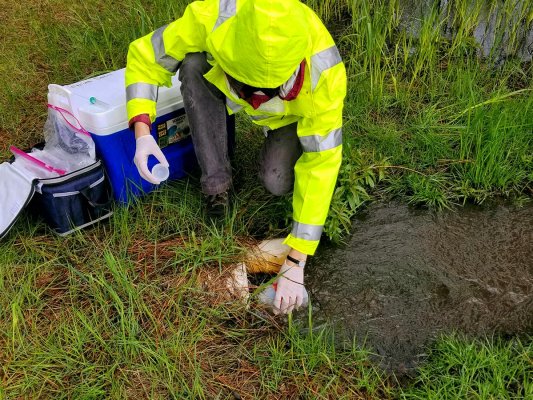Pollution Assessment & Remediation

Apr 24, 2024
On April 19, 2024, the U.S. Environmental Protection Agency (USEPA) designated two widely used PFAS chemicals (a.k.a. "Forever Chemicals"), perfluorooctanoic acid (PFOA) and perfluorooctanesulfonic acid (PFOS), as hazardous substances under the Comprehensive Environmental Response, Compensation, and Liability Act (CERCLA), also known as Superfund. This ruling is significant because both of these substances now have a federal reportable quantity (RQ) threshold for releases that equal or exceed one-pound in a 24-hour period, in addition to state and local reporting requirements that may apply. Under CERCLA, USEPA now has the authority to require responsible parties to clean up PFAS contamination and the legal authority to recover costs from responsible parties in cases where the federal government conducts response actions. With the addition of these to substances to CERCLA, the Department of Transportation (USDOT) is now required to list and regulate these substances as hazardous materials under the Hazardous Materials Transportation Act.
PFAS, Due Dilgence & All Appropriate Inquiry - What To Do. The addition of these two PFAS compounds to the CERCLA could significantly affect how environmental due diligence is conducted in commercial real estate transactions in order to satify liability protections under USEPA's All Appropriate Inquiry rule. But when to test?
The liability posed by PFAS to real estate and construction is that these substances are so toxic that exposure limits are orders of magnitude lower compared to health limits for other classes of contaminants, the compounds readily migrate in water, and they resist natural degradation. This means that even small releases can be costly to assess and mitigate. Many public and private water suppliers across the country have PFAS contaminated water sources and struggle to comply with USEPA’s drinking water quality standards. State and local governments are on the look-out for polluters to protect public water resources and to defray their cost to treat their water supply. Massachusetts and other New England states have established threshold values on when property owners and operators are required to notify that a PFAS release was discovered. To properly manage the risk, you need to know when to include PFAS testing in your due diligence.
Situations That May Warrant PFAS Testing in Real Estate Due Diligence. PFAS has been widely used in the United States because they repel water and stains, provide thermal stability, and reduce friction, and they have been used in a wide variety of products. The following are examples when the risk of PFAS contamination should be considered:
- Locations involving the manufacture of food packaging, textiles or clothing, personal care products, or printing.
- Locations involving the manufacture of electronics and non-electronic products where protective coatings are applied.
- Commercial activity having an on-site subsurface wastewater disposal system, especially if the property is in a state or local groundwater pro
 tection zone.
tection zone. - Locations where a fire occurred, and firefighting foam was used by the local FD or discharged from the building’s fire suppression system. Local FDs have recently switched to PFAS-free firefighting foams, but a building’s foam fire suppression system may still contain PFAS.
- Landfills, and locations where land application of wastewater treatment sludge occurred or where fertilizer sourced from wastewater sludge was applied. Landfills and treatment sludges can be aggregators of potential PFAS containing products.
But don’t test indiscriminately, because studies have shown that PFAS is ubiquitous in the environment meaning you’re likely to find it almost anywhere at low concentrations. So, it’s important to understand background conditions to determine if activities at your property are really a potential source of PFAS.
Contact SAK for assistance! SAK has the specialized chemical expertise needed to determine if PFAS testing is appropriate for due diligence, and the environmental experience to conduct sampling programs for meaningful results.
